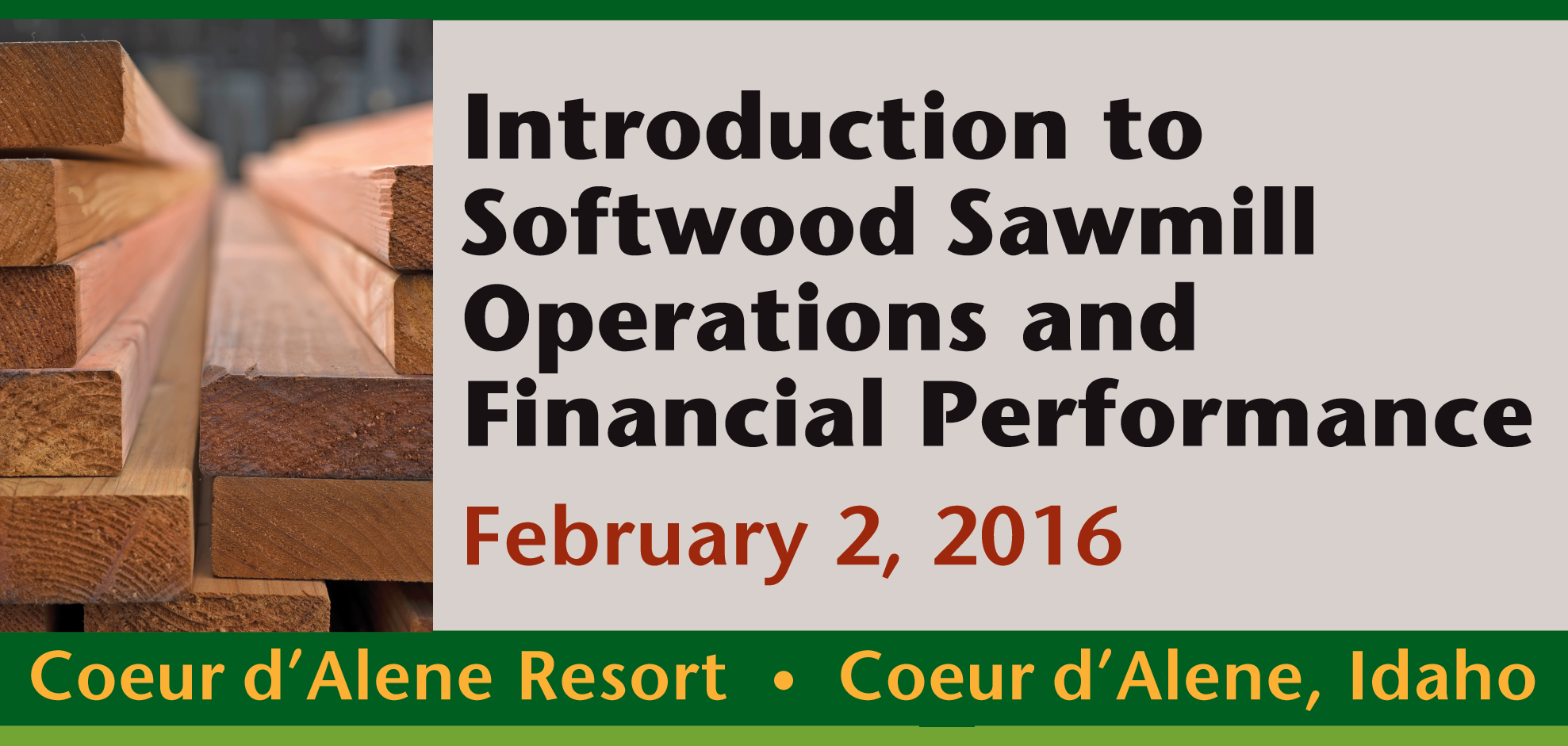Sawmilling 101: Introduction to Softwood Sawmill Operations and Financial Performance

Location: Coeur d'Alene Resort, Coeur d'Alene, ID
9:00 Sawmilling Overview
- A. What are the Basic Manufacturing Processes? Follow a log along the manufacturing processes from delivery to the mill, through sawmilling and kiln drying, and on to the planer and shipping.
- B. What does a Successful Sawmill Manager Pay Attention to? An introduction to key sawmill performance metrics and a sample sawmill income statement to illustrate how key metrics impact financial performance.
10:15 Break
10:30 Markets and Manufacturing in North America
- C. Where Does the Lumber End Up? A review of the primary end users of lumber to include residential building, remodeling and repair and industrial distribution channels. Consumer preferences and green labeling round out the picture of market forces.
- D. What are the Characteristics of Markets and Manufacturing in the Various Regions of North America? An overview of each major region is provided to cover population trends, characteristics of mills, regional market drivers and species mix.
Noon: Lunch
1:00 Key Sawmilling Metrics in Detail
- E. A Close-up of Key Metrics: The instructors will draw upon actual sawmill operating statistics from 20 years of benchmarking study data and how those factors impact financial performance.
- 1. Log Supply and Pricing: Logs are typically 60 to 70 percent of a sawmill’s total operating cost. This session will focus on the characteristics of logs that drive value, and the process of identifying the right log at the right price for the right mill.
- 2. Lumber Recovery: What forces impact the amount of lumber recovered from each log? This session will focus on how mills measure and maximize the volume and value of lumber produced.
- 3. Productivity and Manufacturing Costs: This session will review the key factors that drive mill productivity and manufacturing cost including log and lumber mix, technology, labor, energy, maintenance and supplies.
- 4. Lumber Products and Sales Values: A look at major lumber product categories including commodity and specialty product lines including key characteristics and market values.
- 5. Sawmill Byproducts: This session will focus on end uses and values for byproducts including chips, sawdust, shavings, bark, and hog fuel.
3:00 Break
3:30 Characteristics of Top Performers
- F. What are the Characteristics of Top Performing Sawmill Operations? The instructors will draw on more than 20 years of benchmarking experience to illustrate differences in key performance metrics between average and top performing sawmills, and will present several case studies of top performers.
4:30 Adjourn
The Beck Group and Western Forestry and Conservation Association
The Beck Group, an industry leader in wood products manufacturing consulting and benchmarking, will provide an inside look at the manufacturing process, key operating metrics and best practices for North American softwood sawmills.About the Speakers:
Bryan Beck, President – Since joining The Beck Group in 2003, Bryan has been involved in a wide variety of projects involving sawmills including feasibility studies, capital project planning, acquisition due diligence and benchmarking. Prior to his time with The Beck Group, his experience includes positions at Northwest sawmills and in residential construction.
Roy Anderson, Vice President– Roy joined The Beck Group in 2006. Since that time he has been involved in BECK’s sawmill benchmarking studies, timber supply and demand studies, and log procurement planning. Roy started his career in log procurement in the hardwood industry in the Midwest, and also has extensive experience with woody bioenergy and wood pellet projects.

